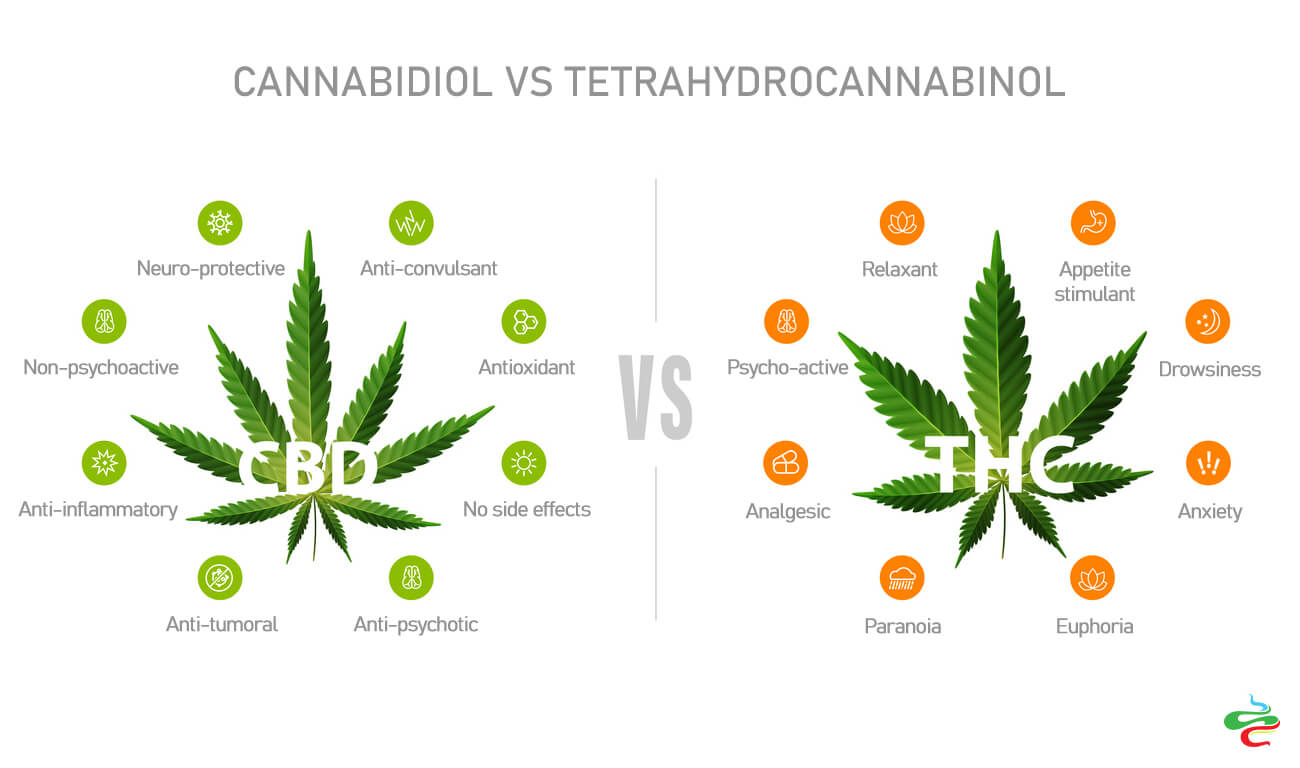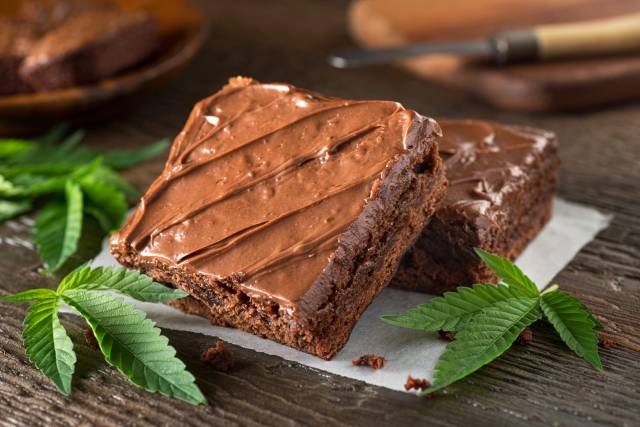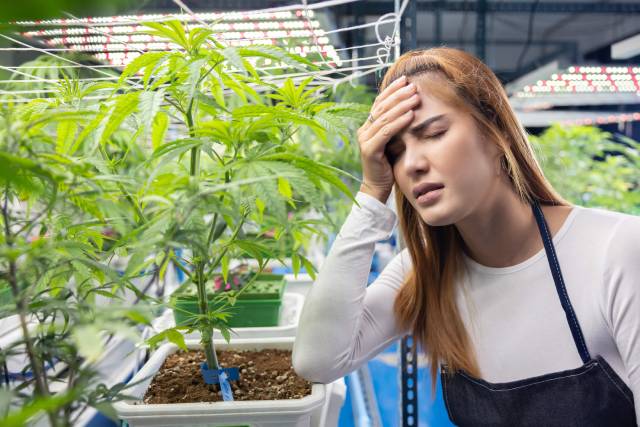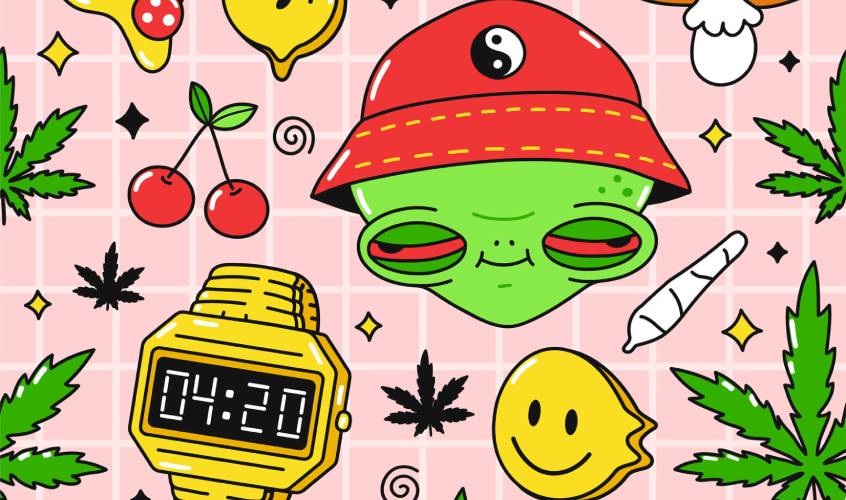Have you ever wondered, “OK, I’m high as a kite right now, but how high can I really get on weed? Will it be dangerous? How would it feel?”
We certainly have. During some of our stoner sessions, we contemplated the boundaries of the experience, the contributing factors and how cannabis produces its effects. We can tell for sure that there are limits to being high, but at the same time, we’ve all been in situations where the feeling was too intense. It all seems relative.
So, what does it depend on?
Unlike alcohol, there’s no clear indication of when we’ve ingested too much cannabis. We don’t pass out or start throwing up. Some of us might fall asleep or feel dizzy, confused or anxious, but these states vary from person to person. You can smoke half a joint and get obliterated for the rest of the day or do a 200 mg edible and go to work.
It’s all connected to how much weed you consume compared to your tolerance level.
Because of this, we decided to follow our curiosity and see how cannabis affects our bodies, how much we can handle, and if too much marijuana can lead to abuse or overdose.
The article will also discuss the importance of personal tolerance and examine the role of the different strains, potency, dosage, and methods of ingestion when getting buzzed.
Let’s get into it.
What Gets You High? Understanding THC, CBD and the Endocannabinoid System
First, we need to understand how weed produces its effects.
The main culprits in this story are two cannabinoids – THC and CBD. Cannabinoids are the natural compounds produced by cannabis.
Tetrahydrocannabinol, or Delta-9 Tetrahydrocannabinol (Δ9-THC), is the only cannabinoid in the cannabis plant with a psychoactive effect. It causes the feeling of euphoria and bliss, which we associate with being high. THC produces these effects by attaching itself to the cannabinoid receptors within our bodies.
These receptors are part of the Endocannabinoid system (ECS), essential to all animals, including us. The ECS resides in the central and peripheral nervous systems, and it helps our bodies adjust to the outside conditions.
CBD, or Cannabidiol, is THC’s chill brother. Although it doesn’t get you high, the cannabinoid has various physical effects that supplement THC’s activity. It relaxes the body, reduces pain and inflammation, and regulates the intensity.

The combined effects of these two compounds give us the well-known stoned feeling we all enjoy.
Apart from THC and CBD, other compounds, such as terpenes, also play a role in marijuana`s effects. Terpenes are aromatic oils that lend cannabis its flavour – citrus, fruit, skunk, etc. They also work together with other cannabinoids to alter or enhance them.
Factors That Affect Your High
Strains and Potency
Weed strains are responsible for the type of high you get. It depends on whether you consume an Indica, a Sativa, or a Hybrid.
In general, Indicas offer a heavier high. They relax you and mellow you out. They’re more suitable for taking the edge off after a long work day. The experience is more reflective and one where you can get lost in your head. We often associate Indicas with being couch-locked due to their higher THC content.
With Sativas, you feel more energised, creative and social. Sativas are better for creative tasks or sports. These strains usually have higher CBD levels than Indicas, which subdues the THC effects.

Hybrids combine the two, and their effects are particular. Some feel more intense at first and then melt into full-body relaxation. Others offer a balanced blend where you’re animated and relaxed at the same time.
Potency is determined by the amount of THC in the plant.
Our ancestors used to smoke cannabis with 5-10% THC content. Later on, we discovered how to extract the resin and make hashish. But today’s weed is strong. A never-ending quest for knockout power drives the industry, and breeders and growers constantly try to boost the plant’s THC profile.
As a result, some current strains out there contain more than 35% THC, not to mention the modern vapes or dabs, which offer highly concentrated mixtures with levels reaching 90%+ THC.
This is an immense leap that totally changes the dynamics of the experience, and it’s not to be taken lightly.
Higher potency means higher intensity and less control over your body and mind. You might become more susceptible to negative episodes and hallucinations. You can also feel headaches and disorientation.
Still, scientists have much to learn about how high-potency marijuana products affect us differently than lower-potency ones.
These products are still new to the market, and we haven’t developed a comprehensive science about their effects on our bodies and lives. In addition, in many parts of the world, cannabis is still illegal, prohibiting scientific work.
Dosage
Dosage relates to potency. Obviously, the more you take, the higher you get. This is most evident with edibles. Their effects take a while to kick in but last way longer, and the experience is more intense.
This is why it’s always better to start with a small amount and then gradually increase it over time. The usual recommended dose is 10 mg.
Methods of Cannabis Ingestion
A significant factor is how you choose to take cannabis. There is a big difference between smoking, vaping, dabbing, and taking an edible.
Smoking
Smoking delivers the cannabinoids directly into your bloodstream through your lungs. The effects are immediate, from a few seconds to a few minutes of taking a hit. The high reaches a peak within 30 min. It lasts 2-4 hours, depending on the THC potency.
Because of this, smoking is usually the preferred method of using weed. However, it’s not as refined since the smoke, inhaled from the additional plant matter, can harm your lungs.
You can undoubtedly prolong your high by smoking many joints, but this won’t necessarily increase its intensity. After a while, the cannabinoid receptors in your body will simply become overburdened, giving you a diminished experience.
Vaping and Dabbing
Vapes and dabs are the next level: they work with cannabis concentrates – highly potent extracts containing only the plant’s resin and no plant material. You can expect the strongest, purest high from concentrates. It’s also considered to be healthier. However, we’re yet to find out their long-term effects or what producers put inside the mixtures.
Also, because of their potency, our body builds up tolerance much quicker.

Dabbing involves using a dab rig to heat marijuana concentrates like wax or crystals. Vaping relates to using a pen or a vaporiser with specifically produced e-liquids, e-juices, and concentrates.
Conduction vs Convection
All dab rigs use conduction, and vapes use convection. Conduction applies heat directly to the substance, like a hot nail melting a dab on contact. Convection uses hot air to vaporise the substance.
Because of this, vape high is smoother and easier to control, as you can take multiple minor hits. It’s also better for your lungs. Dabbing typically involves taking a single, large hit at a time that can transport you to Narnia.
We remember the first time we took a dab. It looked and smelled like pine sap. We knew that it was going to be wild. As soon as we took a hit, our heads spun, and we started coughing. It felt like we inhaled a burning forest. The high was so outrageous that we just sat there for an hour, feeling gravity’s weight on our bodies.
Edibles
For us, cannabis edibles are boss-level.
They travel first to your stomach and liver before passing into your bloodstream and brain. THC undergoes two phases of metabolism in the liver. The first phase converts it into the much more potent 11-Hydroxy-Δ9-tetrahydrocannabinol or 11-OH-Δ9THC, while the second makes it easier for the kidneys to digest and excrete it.
Because of this more potent compound, the effects are more intense and last much longer. They’re usually felt within 30 min to 2 hours after ingesting. The peak is within 4-5 hours, and the effects can last up to 14 hours.
Edibles are harder to dose since it’s almost impossible to determine how much THC is in a serving. When baking cookies, you can mix cannabis into the batter, but you can never know how much cannabis goes into each cookie.
Remember – start small, go slow.

One of our experiences perfectly illustrates this. While in Barcelona, a friend of ours, who is a cannabis novice, decided to taste a pot cookie from a local Cannabis Social Club. It was about a 100 gr cookie with a pungent aroma, so we advised her to take it easy and start with a bite. However, gluttony prevailed, and she ate the whole thing. After an hour – chaos ensued. The experience overwhelmed her; her blood pressure dropped, and she could no longer control her body. We had to return to the hotel, where she slept for 18 hours. After waking up, she still felt sluggish and lightheaded.
Personal Tolerance
This is the big one. The most important factor is your personal disposition and tolerance levels. Although there’s not enough scientific research on marijuana’s effects on the mind and body, scientists largely agree that your level of highness depends on your individual weed habits.
We already mentioned that THC works by binding to the cannabinoid receptors within our bodies. Consuming lots of cannabis will desensitise them, and we’ll grow a tolerance to even today’s most potent weed products.
This is true for almost all substances we use daily, be it tobacco, coffee or energy drinks. And we can attest to this ourselves.
During our time in California, we were first amazed by the incredible choice of cannabis products. We stocked up on flower, cartridges and edibles and dove into the experience. Initially, a small joint and a 5% cannabis drink would do the work. However, this was no longer enough after a few days of smoking. Over the next month, we gradually increased the amount until we reached a point where we were rolling joints every hour or two while still vaping cartridges. Cannabis no longer had the same effect because our bodies grew tolerant.
It takes approximately 3 to 4 weeks for THC to leave the system. So, your T-break (tolerance break) should be at least 21 days long. After that, your body will return to base level.
Can You Overdose on Weed?
The short answer is no. You can’t overdose on cannabis. However, you can still abuse it, leading to bad episodes.
When discussing drug overdoses, we usually think about the worst outcomes people suffer from opioids like Fentanyl, Oxycontin or heroin. When they’re involved, a specific mechanism leads to death.
This is something Oxford University anesthesiology professor K.T.S. Pattinson has observed:
“In drug addicts, respiratory depression is the primary cause of death.“
In other words, during an opioid overdose, the victim falls unconscious, and the body literally forgets to breathe. Scientists have discovered that the fundamental mechanism telling our bodies to breathe originates low in the brainstem, in an area known as the pre-Bötzinger complex. Opioids don’t just suppress pain and increase feelings of pleasure. They also affect the pre-Bötzinger complex, which causes respiration to become slow and irregular. In an overdose, breathing shuts down completely, and death occurs due to lack of oxygen.
Weed doesn’t have this effect, and according to the US Centers for Disease Control and Prevention, no reported deaths have resulted from cannabis use.
Still, too much marijuana may cause severe, uncomfortable symptoms such as delusions, hallucinations, and anxiety, which may require a visit to the emergency room. People call this state green out.

It’s good to know that, in most cases, these symptoms are temporary and resolve spontaneously. They do not result in permanent disability or death and are more common in new users.
The unpleasant reaction to weed is usually associated with marijuana edibles. People tend to ingest more to get high faster because it takes longer for them to take effect. This can make for a very intense experience that newbies find challenging to navigate.
Conclusion
THC, the main compound in cannabis, gets us high by binding to the cannabinoid receptors within our bodies.
How high you get depends on various factors. The most important are your personal disposition, how you choose to take cannabis and the product’s potency.
Although no recorded deaths are caused by marijuana overdose, it can still lead to abuse and unpleasant experiences.
It’s best to practice moderate consumption with regular breaks to enjoy what the plant has to offer fully.








Leave a Comment